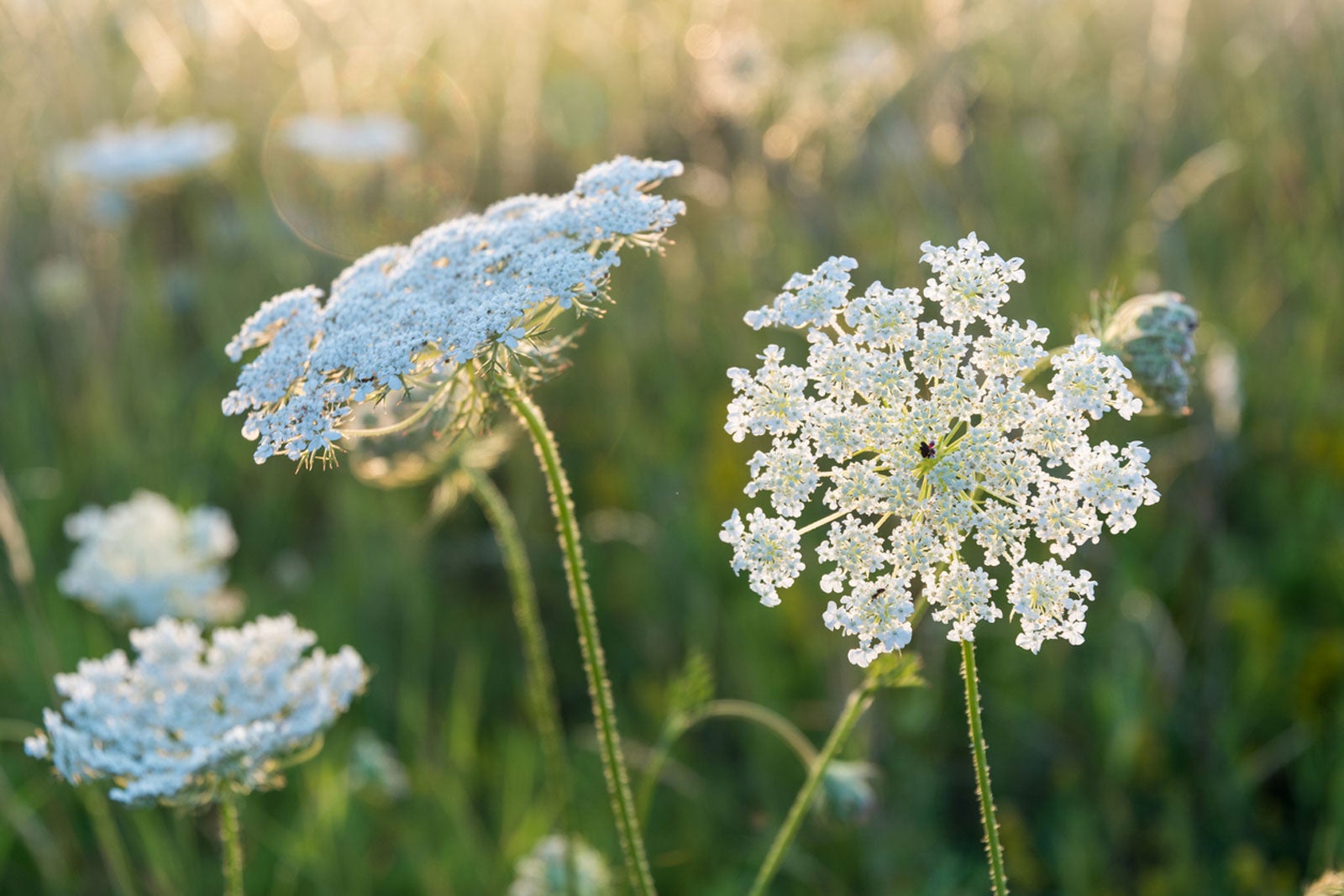
Queen Anne's Lace, also known as wild carrot, is a fascinating plant with a rich history and unique characteristics. Ever wondered why it's called Queen Anne's Lace? Legend has it that Queen Anne, an expert lace maker, pricked her finger while crafting lace, and a drop of her blood fell onto the lace, symbolized by the tiny red flower at the center of the plant. This plant isn't just a pretty face; it has been used in traditional medicine and even as a food source. Did you know that the roots of young Queen Anne's Lace plants are edible and taste like carrots? However, be cautious—this plant closely resembles the poisonous hemlock. Intrigued yet? Let's dive into 15 fascinating facts about Queen Anne's Lace that will leave you amazed!
Key Takeaways:
- Queen Anne's Lace, also known as wild carrot, has a rich history and ecological importance. It attracts pollinators, provides habitat for beneficial insects, and improves soil health.
- While Queen Anne's Lace has culinary and medicinal uses, it's important to be cautious. Proper identification is crucial, as it closely resembles poison hemlock, and pregnant women should avoid consuming it.
What is Queen Anne's Lace?
Queen Anne's Lace, also known as wild carrot, is a fascinating plant with a rich history and unique characteristics. Let's dive into some intriguing facts about this beautiful and often misunderstood plant.
-
Scientific Name: The scientific name for Queen Anne's Lace is Daucus carota. It's a member of the Apiaceae family, which includes carrots, parsley, and celery.
-
Origin: This plant originated in Europe and Asia but has since spread to North America, where it grows abundantly in fields and along roadsides.
-
Appearance: Queen Anne's Lace is easily recognizable by its delicate, white, lace-like flowers that form a flat-topped cluster. Each cluster can contain hundreds of tiny flowers.
Historical Significance
Queen Anne's Lace has a rich history that dates back centuries. Here are some historical facts that highlight its importance.
-
Named After Royalty: The plant is named after Queen Anne of England, who was an avid lace maker. Legend has it that the red flower in the center represents a drop of her blood from pricking her finger.
-
Medicinal Uses: Historically, Queen Anne's Lace was used for its medicinal properties. It was believed to help with digestive issues, kidney problems, and even as a diuretic.
-
Ancient Cultivation: The wild carrot was cultivated by the ancient Greeks and Romans for its edible root, which is the ancestor of the modern carrot.
Ecological Role
Queen Anne's Lace plays a significant role in the ecosystem. Here are some facts about its ecological importance.
-
Pollinator Attraction: The flowers attract a variety of pollinators, including bees, butterflies, and beetles, making it an important plant for maintaining biodiversity.
-
Habitat for Insects: The plant provides a habitat for beneficial insects like ladybugs and lacewings, which help control pest populations.
-
Soil Health: Queen Anne's Lace can improve soil health by breaking up compacted soil with its deep taproot, allowing for better water infiltration and root growth for other plants.
Culinary Uses
While not as common today, Queen Anne's Lace has been used in cooking. Here are some culinary facts about this versatile plant.
-
Edible Roots: The roots of young Queen Anne's Lace plants are edible and taste similar to cultivated carrots, though they are much smaller and woodier.
-
Flavorful Seeds: The seeds can be used as a spice, similar to caraway seeds, adding a unique flavor to dishes.
-
Herbal Tea: The leaves and flowers can be used to make a herbal tea that is both aromatic and flavorful.
Safety and Precautions
While Queen Anne's Lace has many uses, it's important to be cautious. Here are some safety facts to keep in mind.
-
Look-Alike Plants: Queen Anne's Lace closely resembles poison hemlock, a highly toxic plant. Proper identification is crucial before using any part of the plant.
-
Skin Irritation: Handling the plant can cause skin irritation in some people, especially if exposed to sunlight. Wearing gloves can help prevent this.
-
Pregnancy Warning: Consuming Queen Anne's Lace is not recommended for pregnant women, as it has been known to stimulate uterine contractions.
The Final Word on Queen Anne's Lace
Queen Anne's Lace, also known as wild carrot, is more than just a pretty face in the field. This plant, with its delicate white flowers, has a rich history and surprising uses. From its medicinal properties to its role in folklore, Queen Anne's Lace offers a lot to those who take the time to learn about it. Whether you're interested in its edible roots or its ability to attract beneficial insects, this plant is a true gem. Just remember, it can be easily confused with the toxic hemlock, so proper identification is crucial. Next time you see those lacy blooms, you'll know there's more to them than meets the eye. So, keep exploring, stay curious, and let the wonders of nature continue to amaze you.
Frequently Asked Questions
Was this page helpful?
Our commitment to delivering trustworthy and engaging content is at the heart of what we do. Each fact on our site is contributed by real users like you, bringing a wealth of diverse insights and information. To ensure the highest standards of accuracy and reliability, our dedicated editors meticulously review each submission. This process guarantees that the facts we share are not only fascinating but also credible. Trust in our commitment to quality and authenticity as you explore and learn with us.


